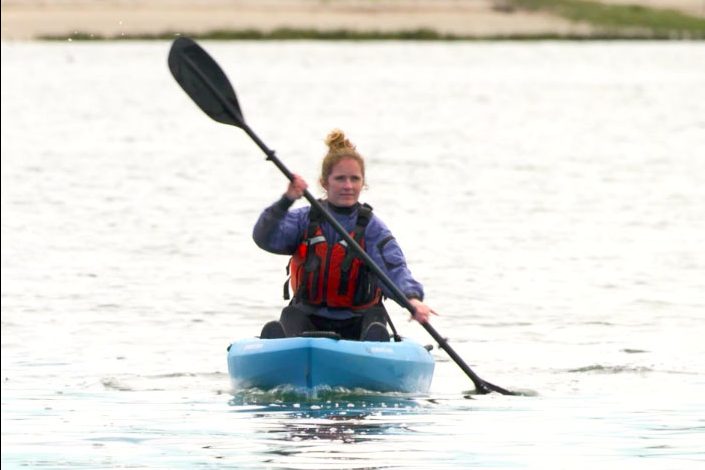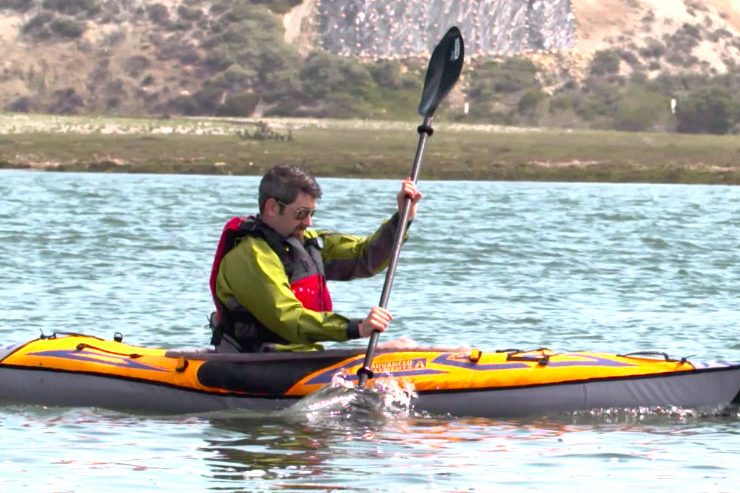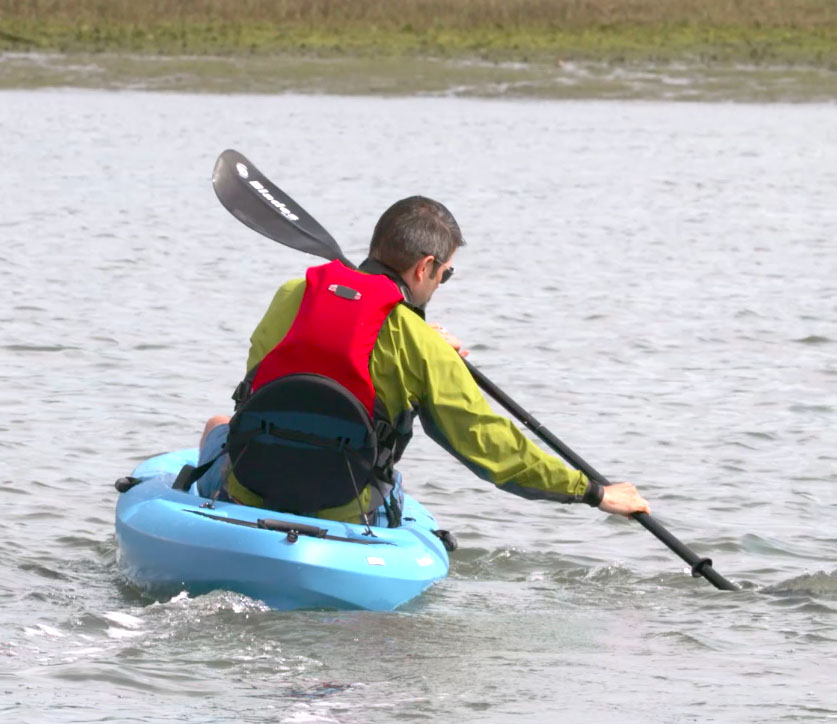How to Paddle a Kayak | Safer Paddling Series: Episode 4 | Rapid Media
In partnership with the U.S. Coastguard and the Water Sports Foundation, instructors Paul and Kate Kuthe of the American Canoeing Association teach three basic paddling movements in Safer Paddling Series: Episode 4.
Paddling in a kayak encompasses three different movements: going forwards, stopping or going backwards, and turning.
Paddling in a straight line is the most basic movement. Loosely grip your paddle with your arms shoulder-width apart. Reach one paddle blade towards your feet and pull it back through the water. Twist your body to pull the blade back towards your hips. It’s important to engage your core muscles—not just the arms.
Backing up is the same motion, but in reverse. When you want to stop or go backwards, place a paddle blade in the water and gently push away from your body.
Occasionally, the forward-moving boat will veer off track. To correct this, use a sweep stroke. Reach out and away from your kayak, making a “C-stroke” in the water. This should reposition you properly.
Be safe. Be smart. Have fun.
As a United Stated Coast Guard nonprofit grant recipient, the Water Sports Foundation produces paddling safety outreach materials and distributes them through boating and paddling media providers. Paddle sports currently has an inordinately high rate of accidents and deaths that for the past five years has been increasing, while power boating stats have been decreasing during the same period. The goal is to create heightened public awareness of safer paddling making paddle sports safer and to ultimately reduce the total number of paddle sports related deaths annually.










